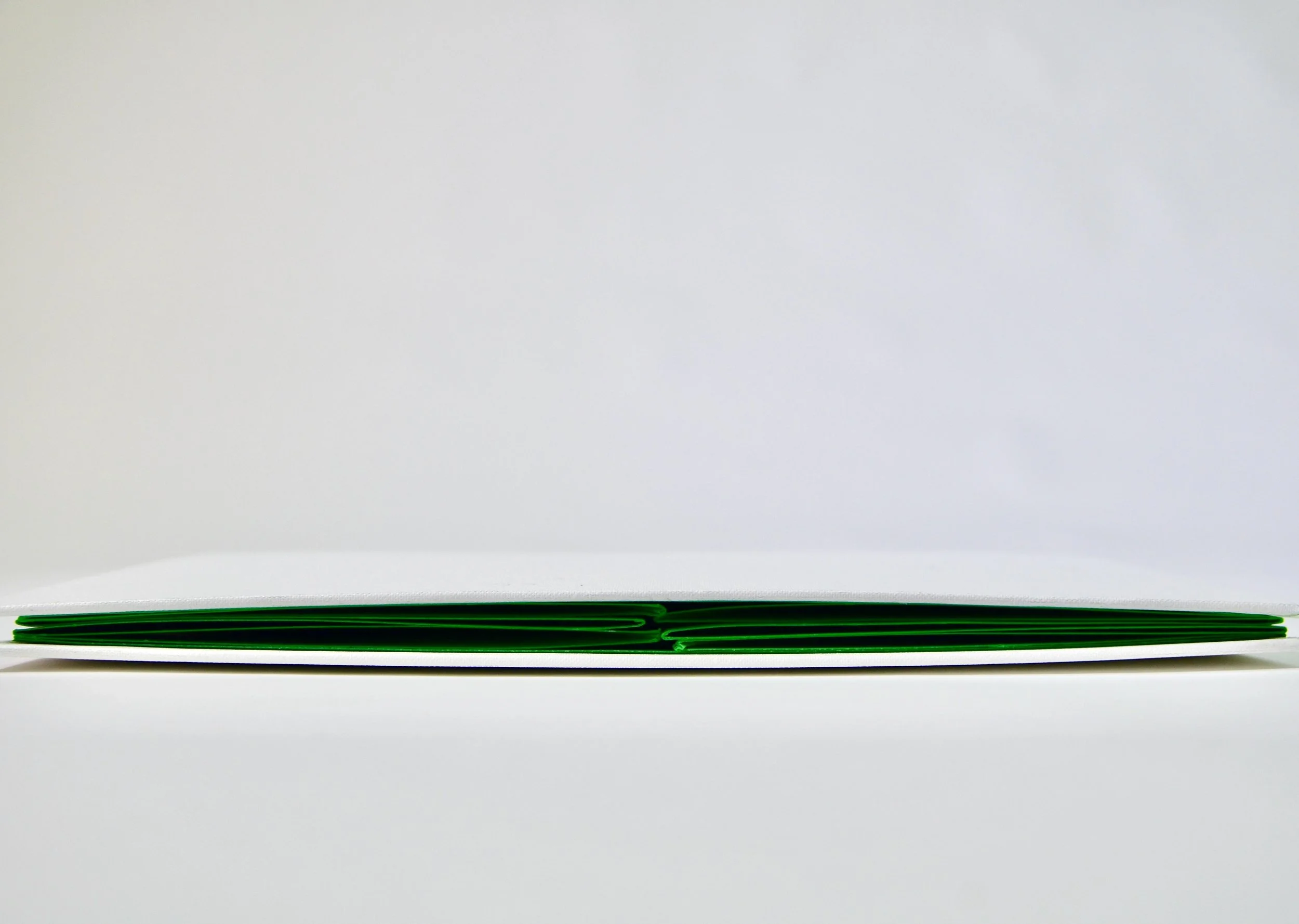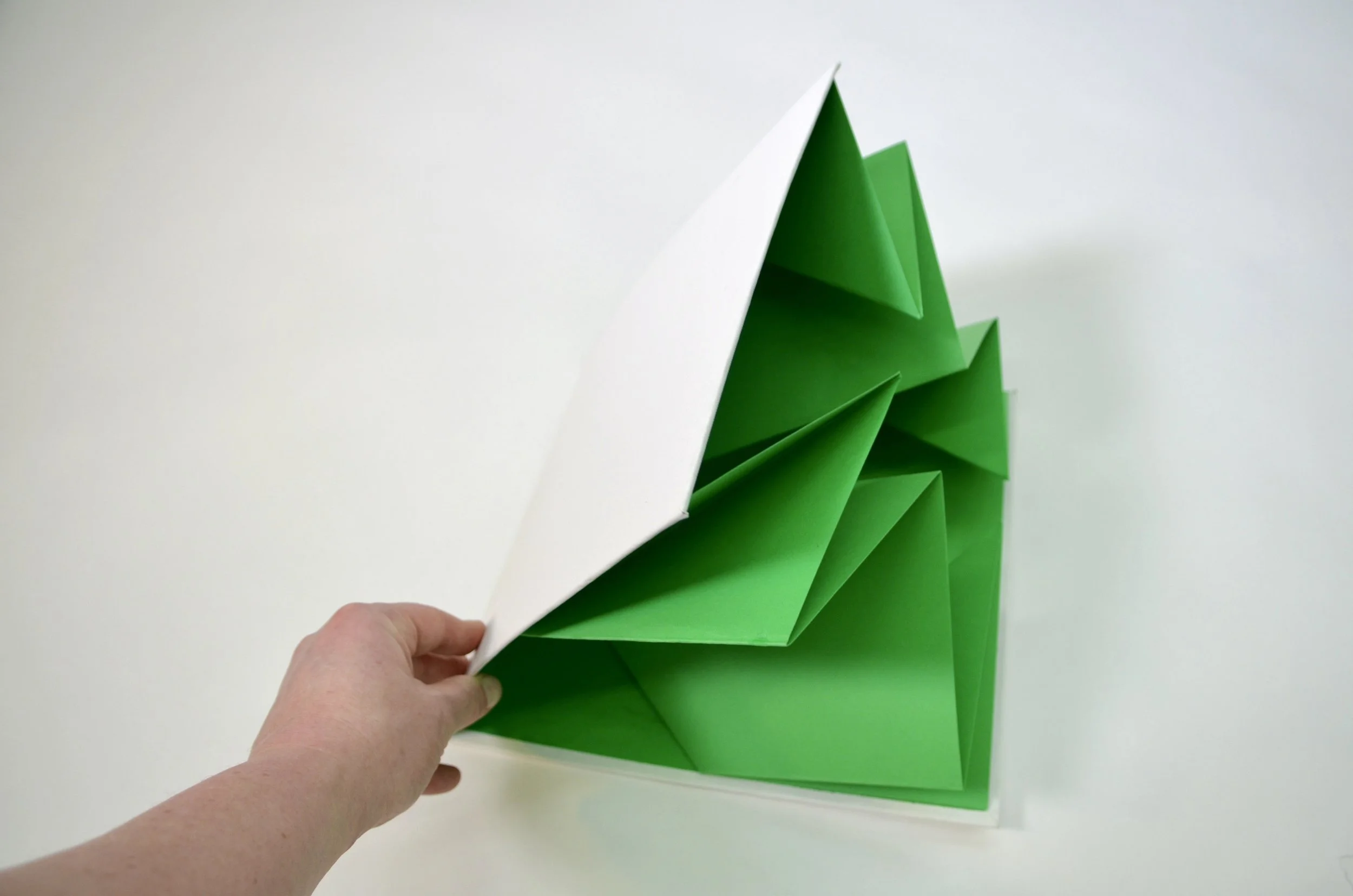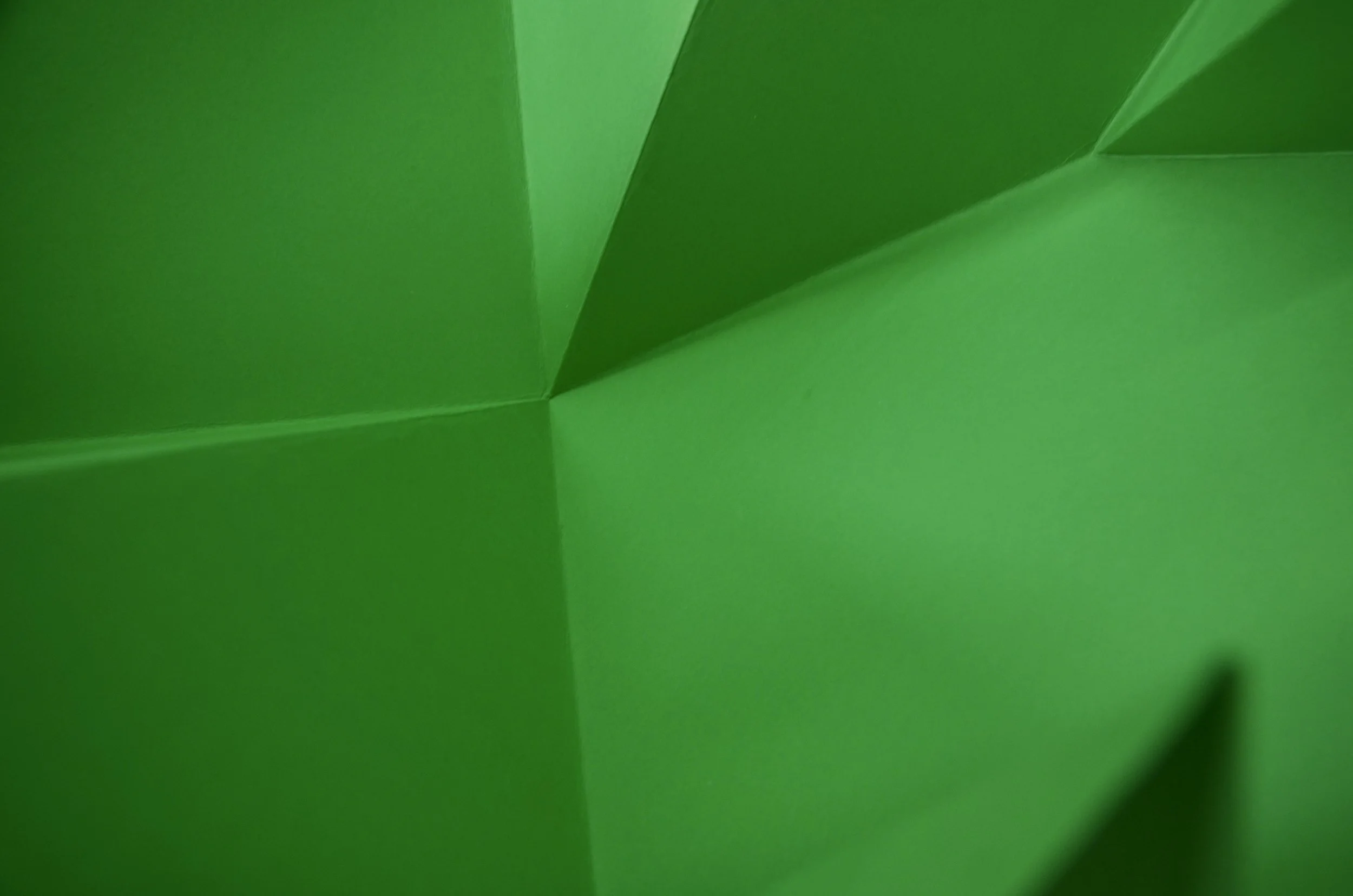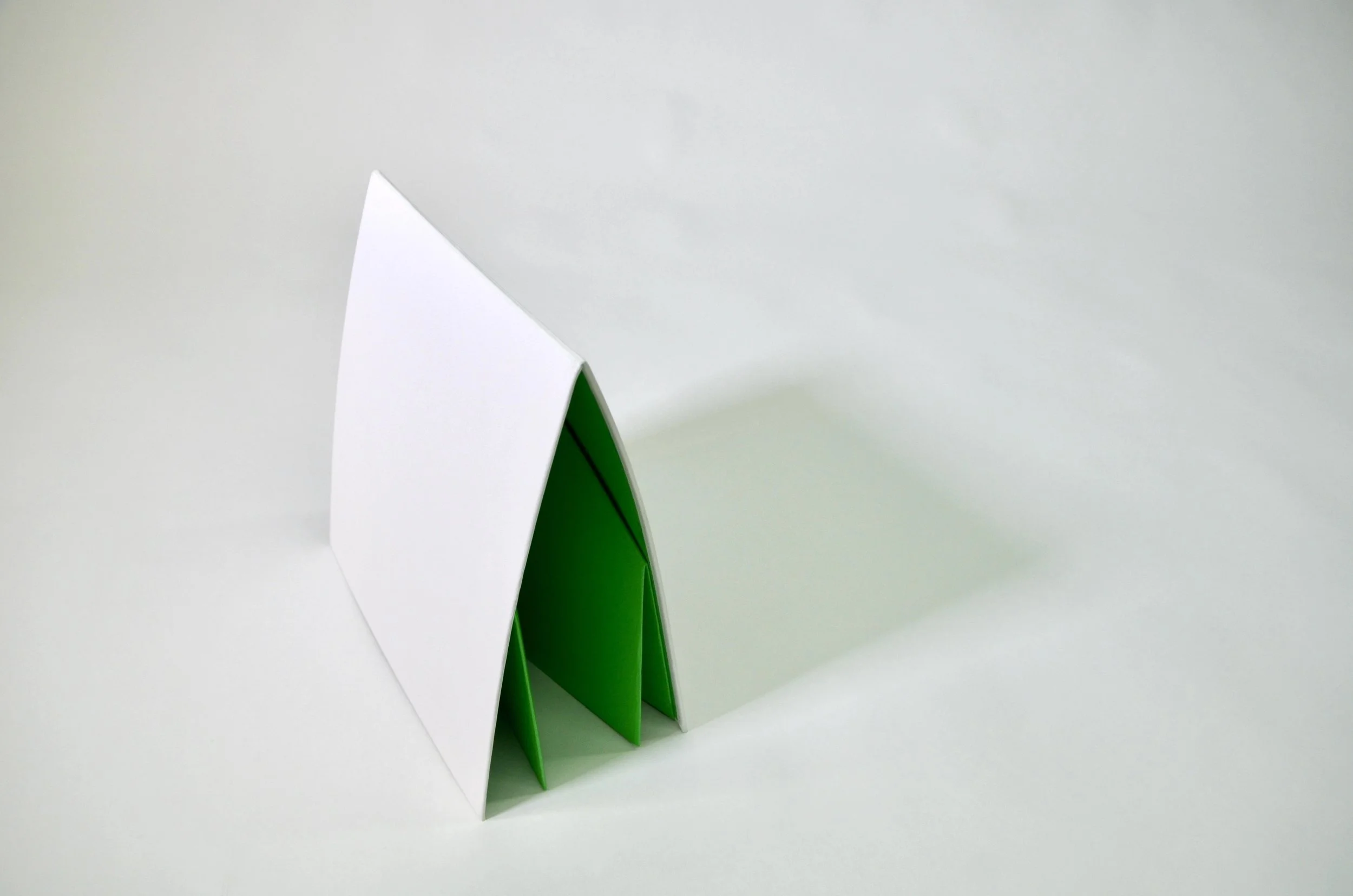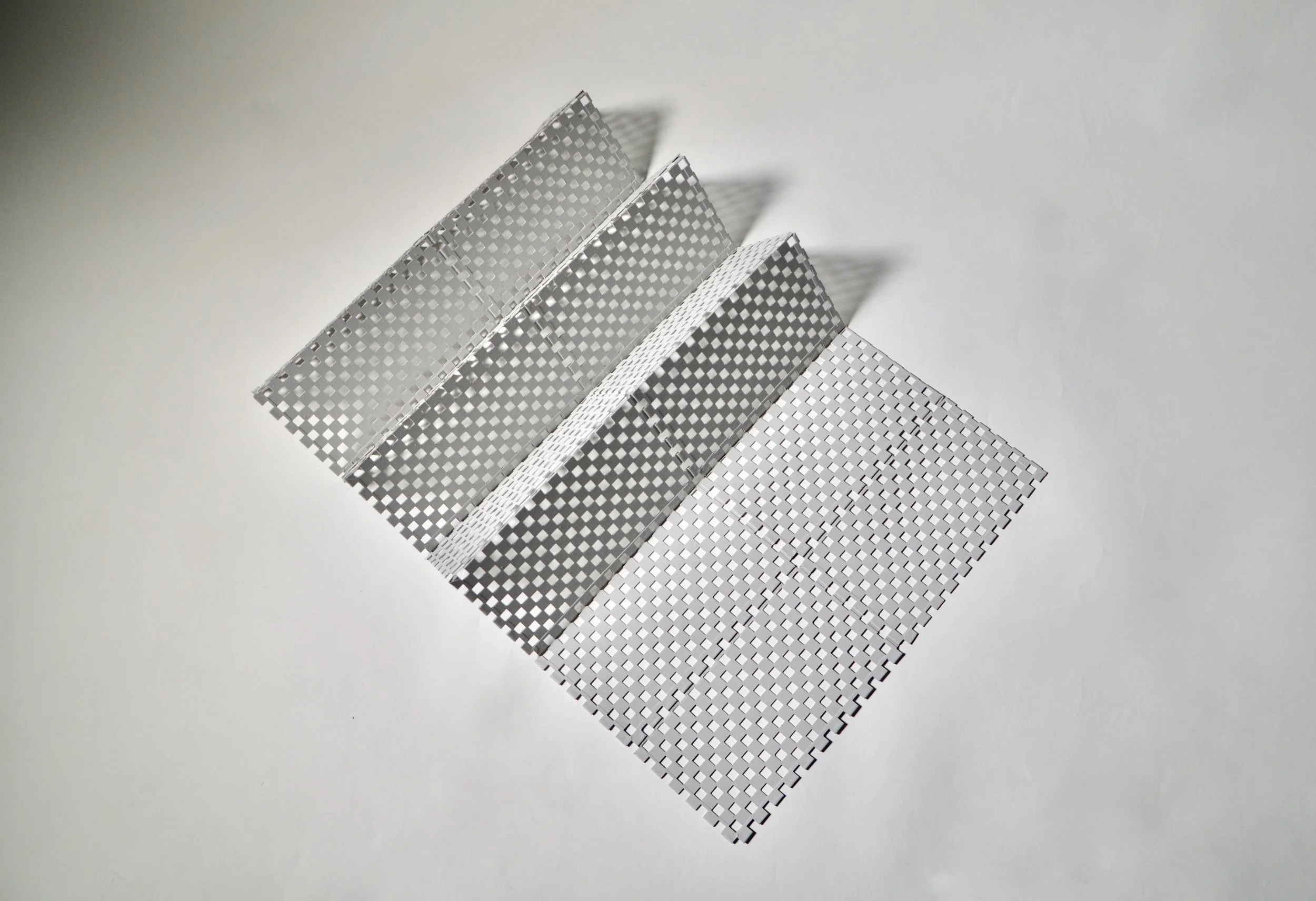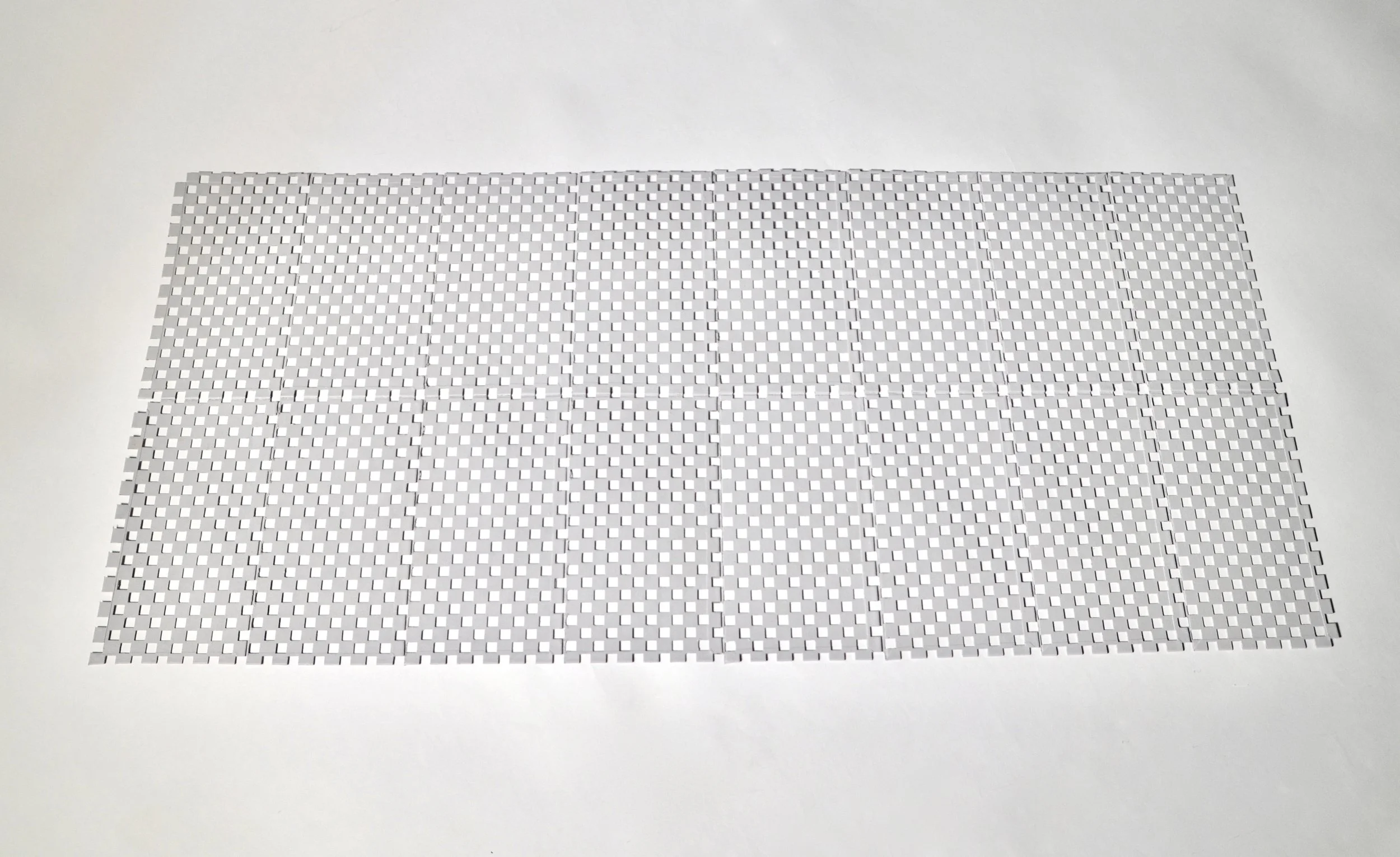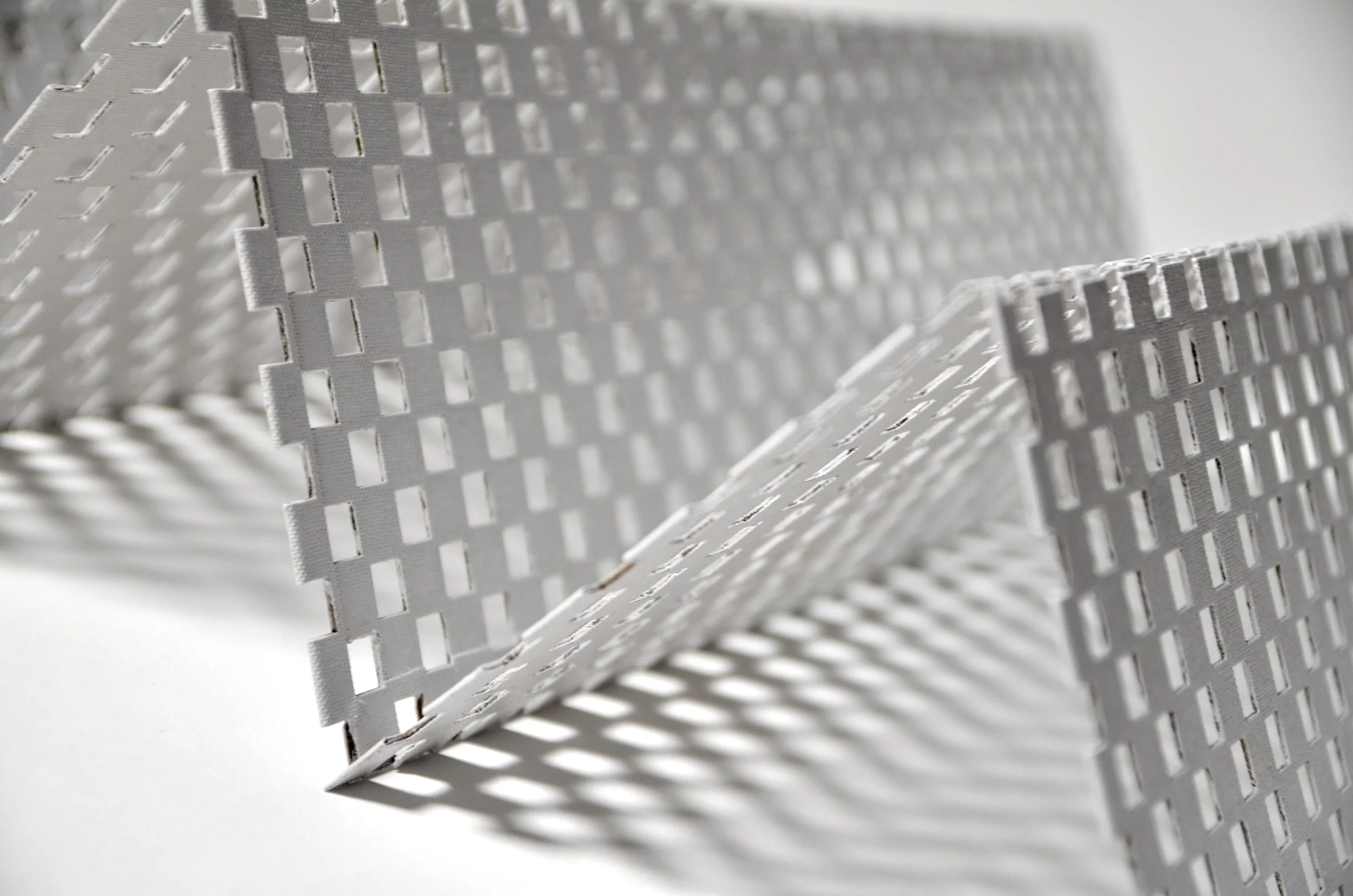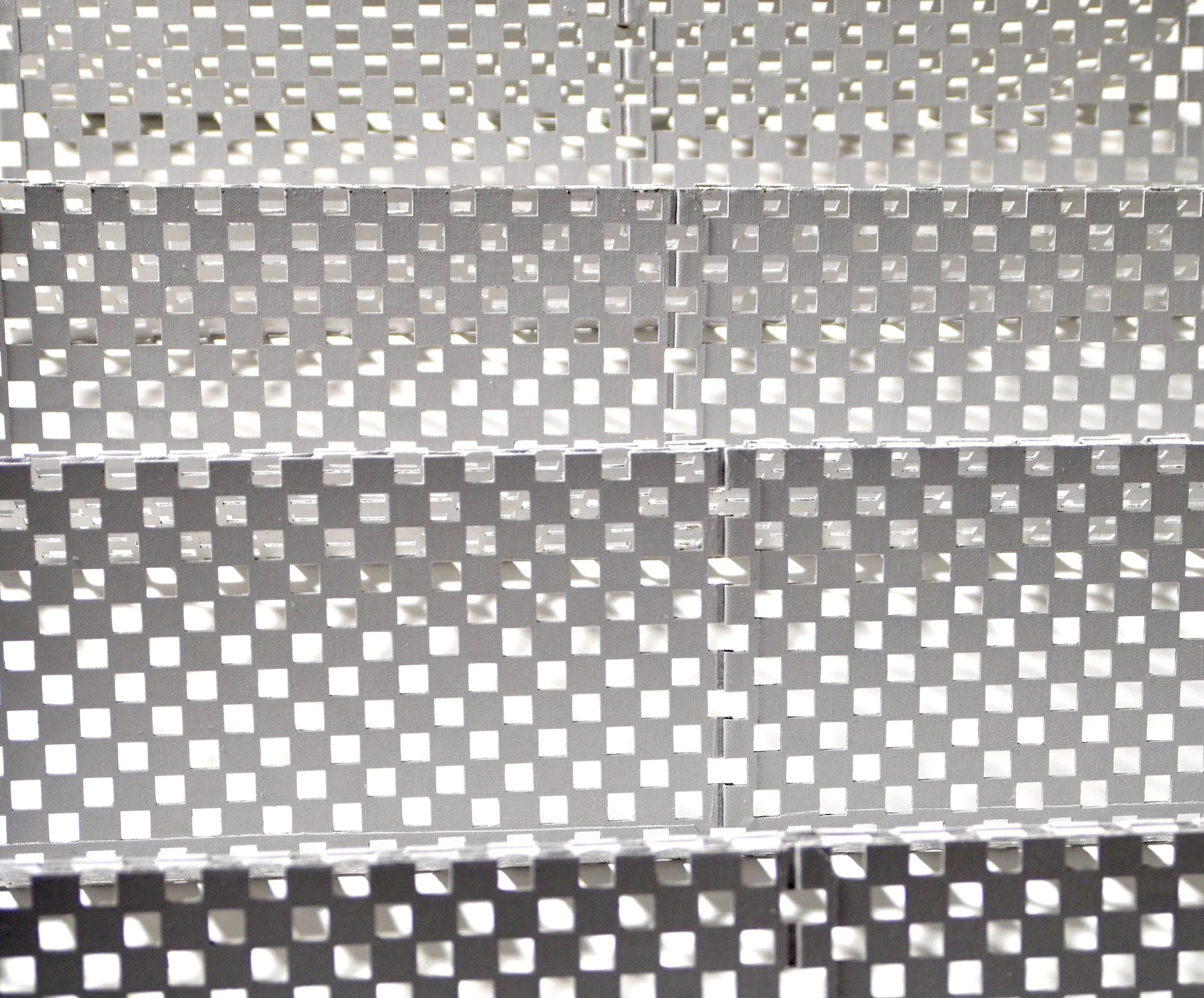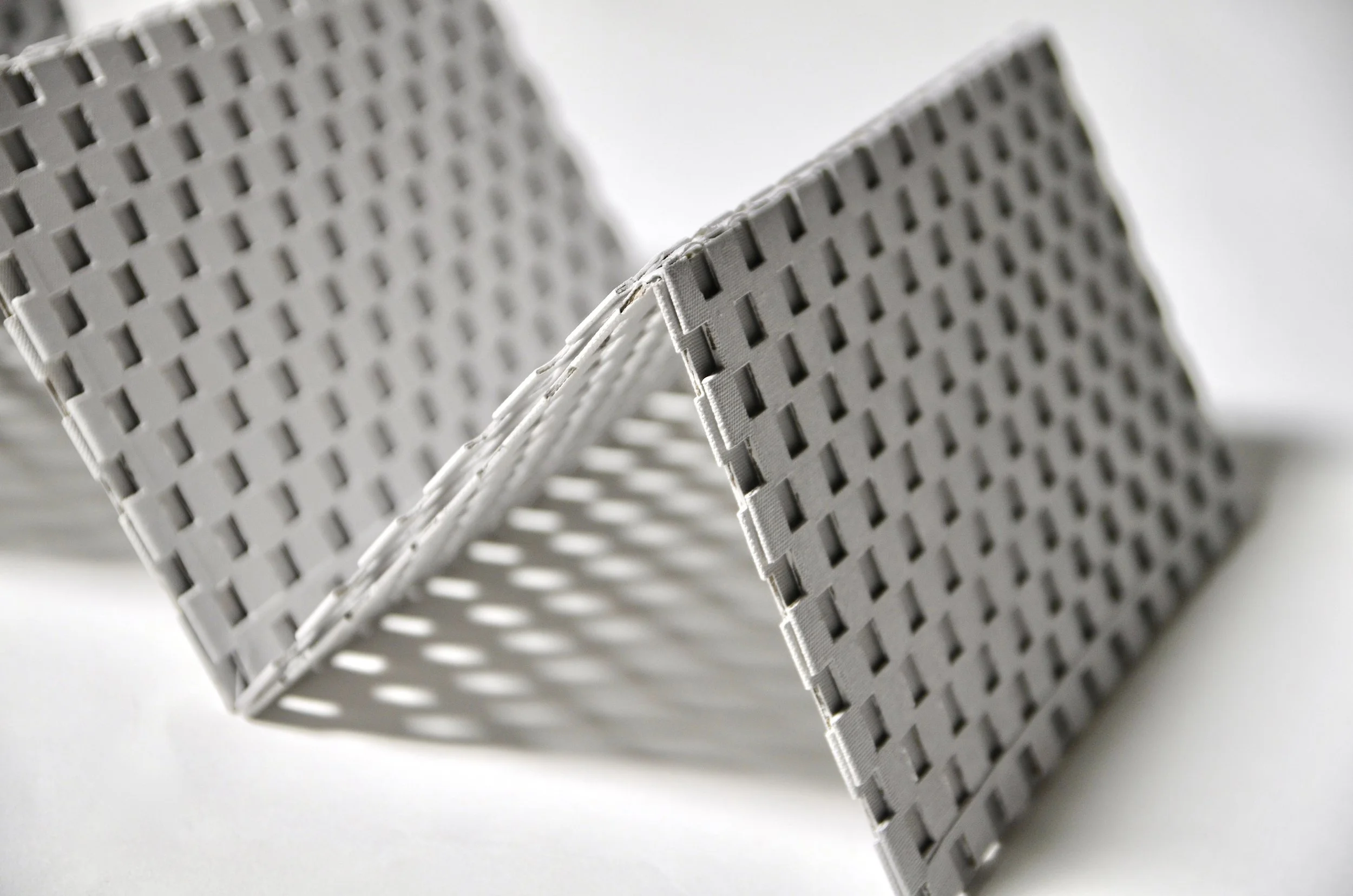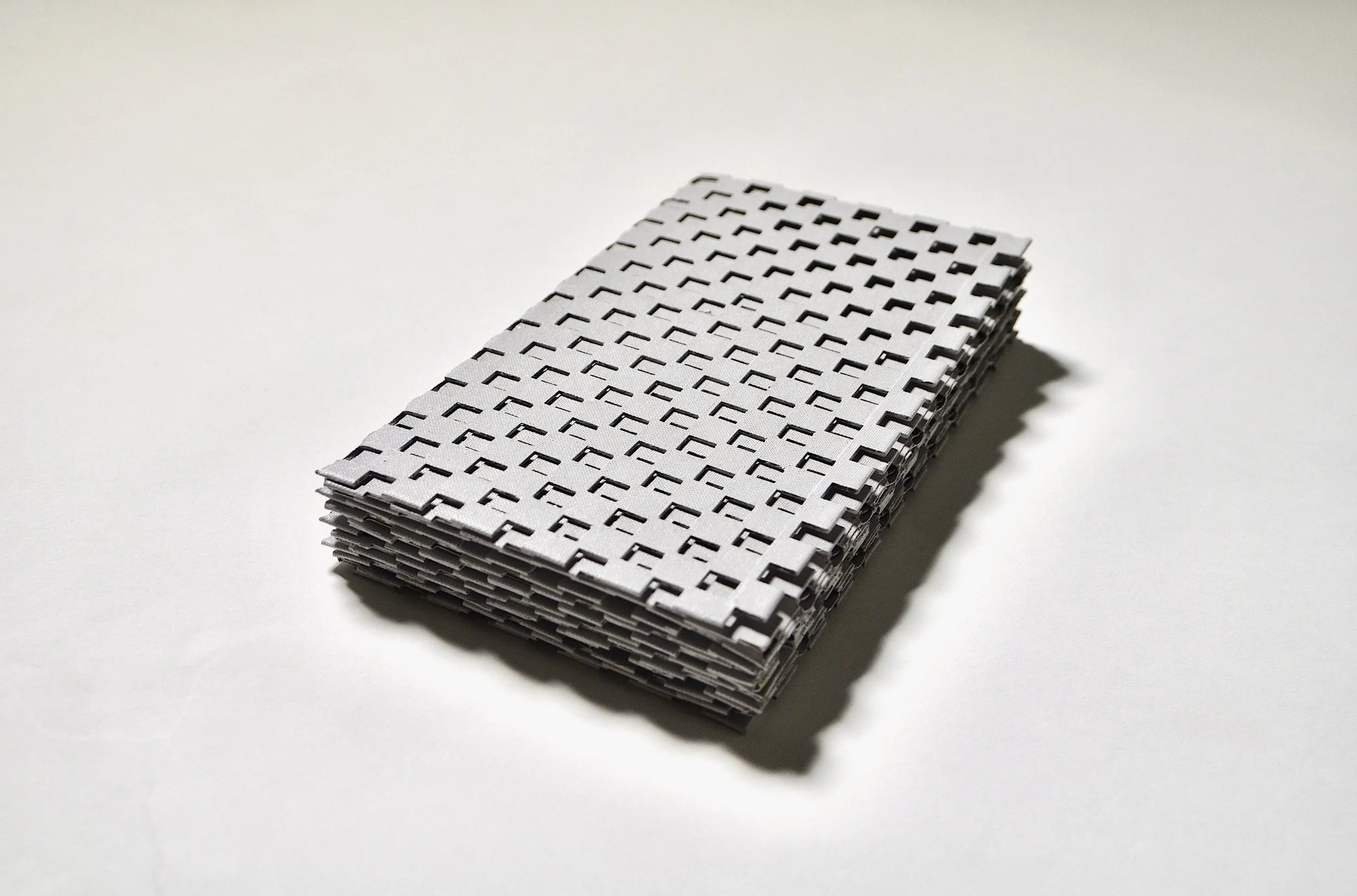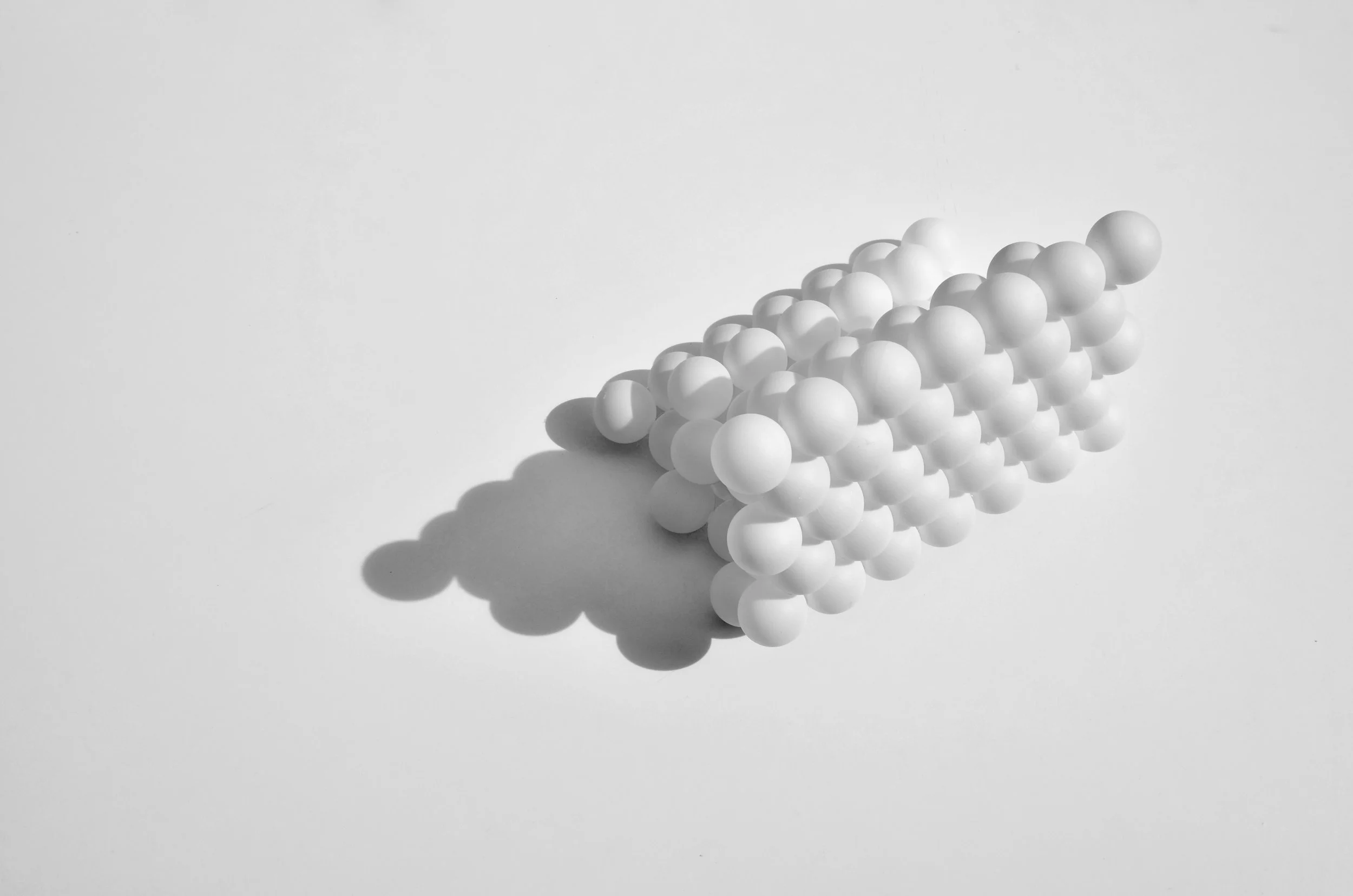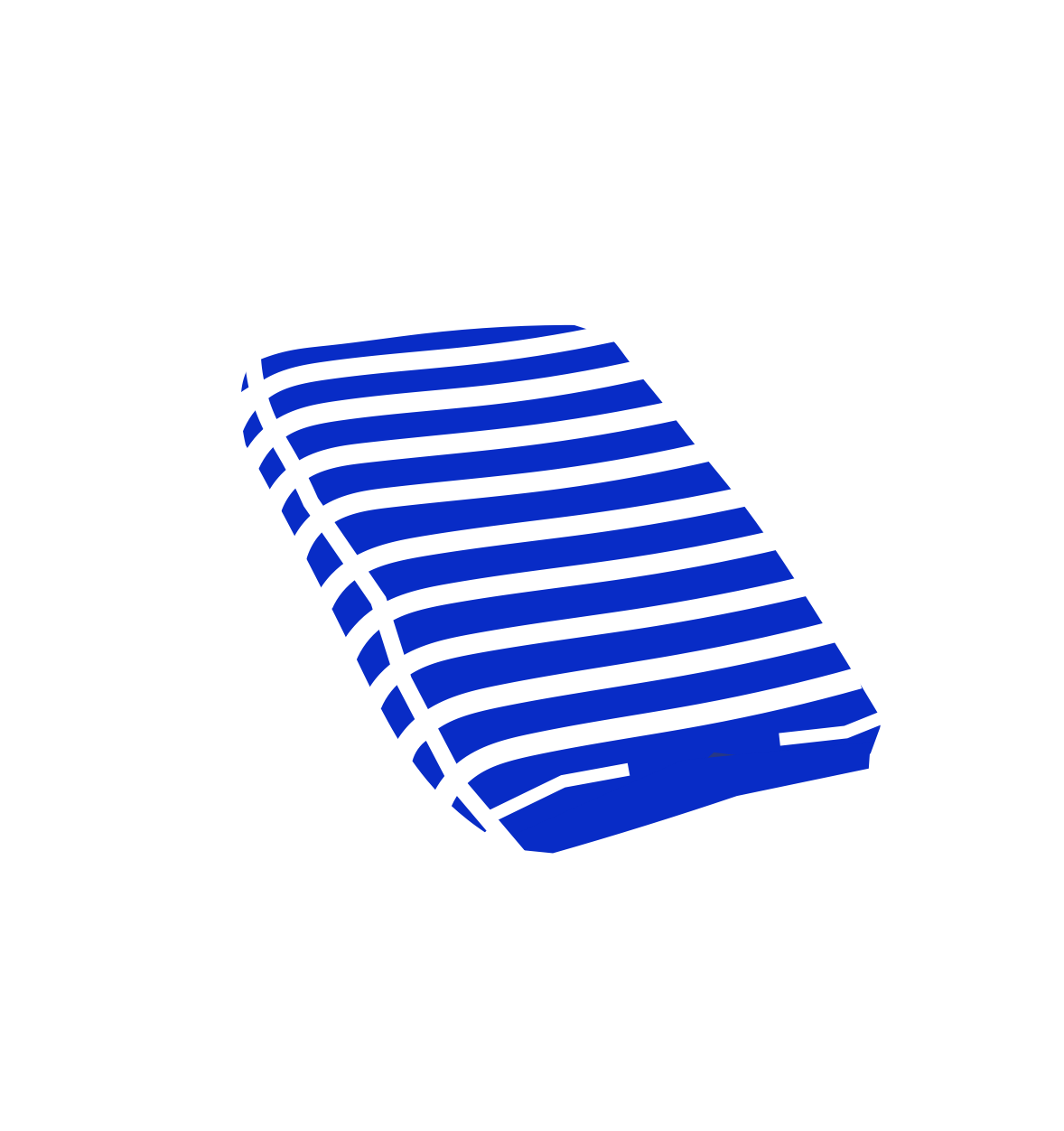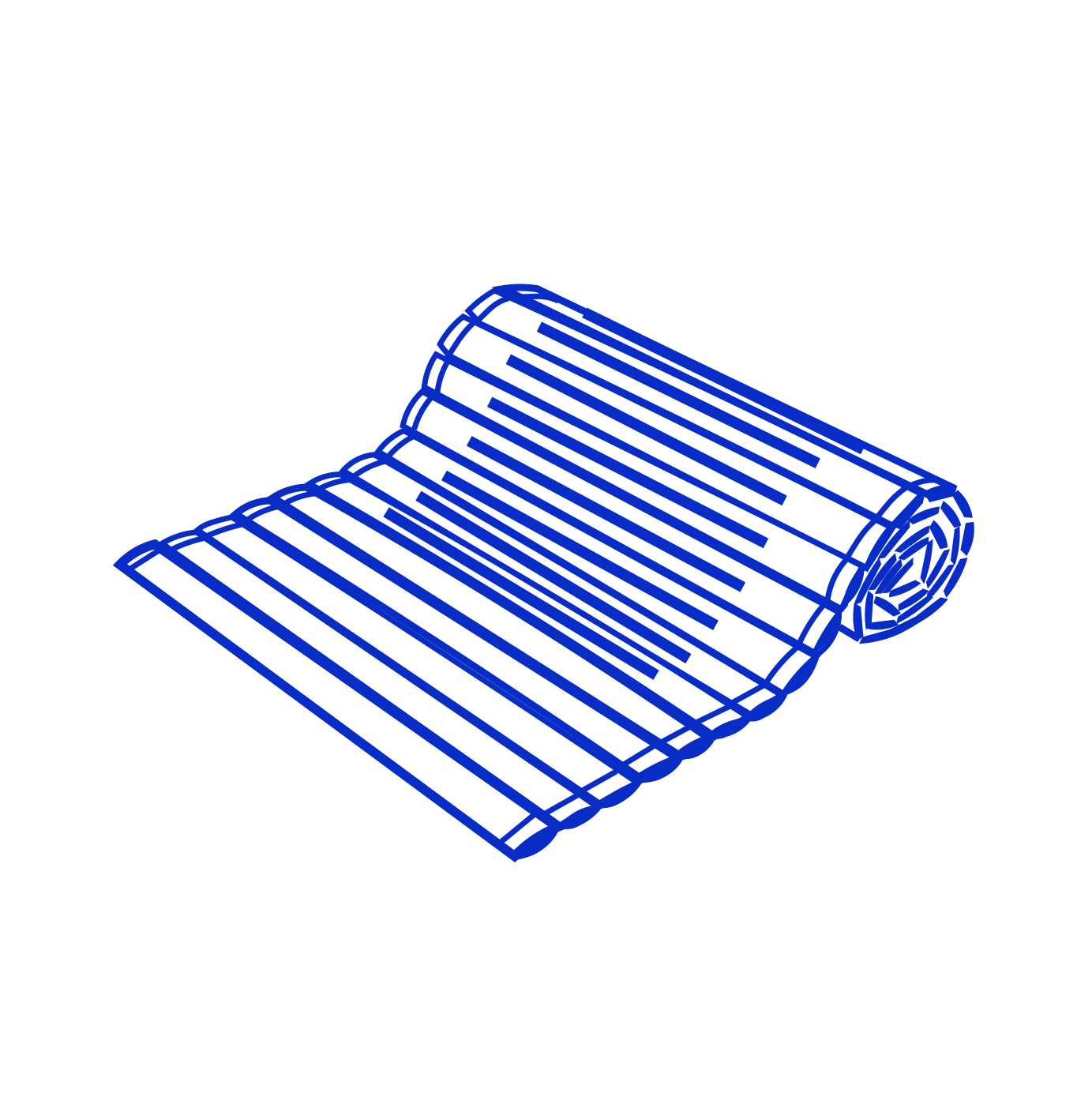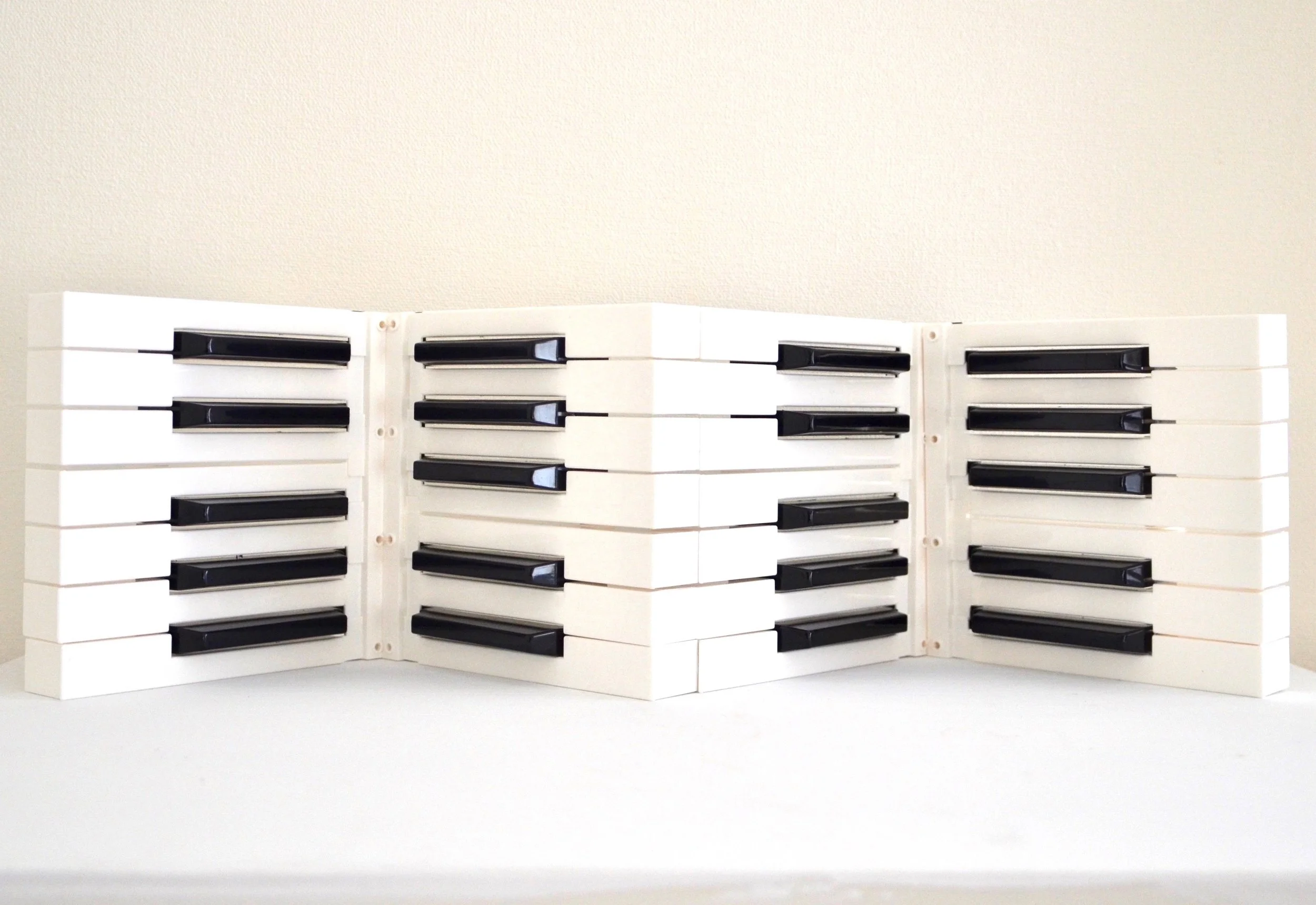Anywhere is a single page book that, once opened, produces an instant green screen, capable of transporting the reader anywhere. Using the Turkish map fold, it is a one of a kind book, and portable.
Transparency
The almost-nothingness of transparent backgrounds was the starting point for this work. Those grey and white chequered backgrounds that show transparency on graphics files, that are often left unnoticed, intrigued me. I wanted to make something with these overlooked backgrounds.
I like that transparent backgrounds describe a see-though plane by using an opaque pattern. And that they do so in virtual space. I wanted to transform this pattern by making it a material object that would occupy a physical space. I wanted it to unfold the way a map does, something that describes a territory.
Transparency is a map fold book to be held up to see the world beyond it.
_
Transparency is part of a project made with members of the art collective Art Byte Critique. Responding to the theme Futuristic Illusion, this book belongs to a collaborative project with books by Arthur Huang, Patty Hudak, Yuko Kamei, Nick West, and Carlee Wolcott. It was first shared at Bristol Artist’s Book Event 2024.
Transparency is part of the collection of artists’ books at the UWE (University of West England).
To/Fro
To/Fro is a book assembled from 104 ping pong balls. Belonging to the Books From Things series are a cluster of orbs. I wanted to mirror the back and forth between the book and the reader, reading.
Blog: Book Forms
What started as a list snowballed into this; a series of twenty images that illustrate established book forms. Not that this is exhaustive. There are no audio books listed. Nor does it include the grisly practice of anthropodermic bibliopegy - the act of binding books with human skin. Shudder. It does, however, include the clay tablet, the bamboo roll, the scroll, the codex, the codex rotundus, French doors, the fortune teller, the concertina, the map fold, the Turkish map fold, loose leaf, dwarsligger, the flip book, the hand book, the pop-up book, the miniature book, kamishibai, the paperback, the ebook, and the artist’s book. Good reading.
In the Ancient Near East, clay tablets were used as a writing medium from the Bronze Age to the Iron Age. Cuneiform characters were drawn on a wet clay tablet with a stylus made of reed, and then left to bake in the sun. Collections of clay documents made up the first archives, the root of the first libraries.
↑ Clay tablet
Long before the widespread introduction of paper in China, bamboo canes were split and strung together to form the main media for writing documents. Bamboo books utilised an abundant natural resource to produce portable writing surfaces.
↑ Bamboo book
The Codex Rotundus (late 1500s) is a unique example of medieval book culture given its distinctive circular shape. Written in Latin and French, this manuscript is 266 pages long and measures about 9cm in diameter.
↑ Codex Rotundus
A fortune teller (also called a cootie catcher, chatterbox, whirlybird, or paku-paku) is a form of origami used in children's games. By choosing from several options on its exterior panels, the player is led to a hidden outcome.
↑ Fortune teller
The Turkish Map Fold is a unique and sculptural book form made from a single piece of paper, with an optional cover. As you open the book, the piece of paper unfolds so you can see the entire sheet.
↑ Turkish map fold
Dwarsligger (meaning crossbeam in Dutch) is a book printed with text parallel to the spine of a conventional book. This binding method permits the book to remain open without restraint so it can be read with one hand.
↑ Dwarsligger
A flip book, flicker book, or kineograph is a booklet with a series of images that very gradually change from one page to the next, so that when the pages are viewed in quick succession, the images simulate motion.
↑ Flip book
Kamishibai (which translates as paper play) is a form of storytelling that was popular during the 1930s and 1940s in Japan. Kamishibai are performed by narrators who travelled with sets of illustrated boards that they placed in a miniature stage-like device and narrated the story by changing each image.
↑ Kamishibai
Based on the graphic artist Antonio Ladrillo’s book Colors (2020) this illustration of an artist’s book allows the reader to explore endless combinations of reading, in both two- and three- dimensions.
↑ An artist’s book
Likewise
Likewise is a concertina book made from black and white keyboard keys. This book is part of the Books From Things series. To make this book, I dismantled a keyboard and then threaded it together with cotton.
Meat
Meat is a book made from several slices of folded beef. As part of the Books From Things series, these pages were sourced from a local supermarket. I wanted to make a book using the most fundamental of physical materials.
Bruno Munari, ‘An Unreadable Quadrat’ (1953)
Blog: Artists' Books
What can a book be? How can the form of the book be used as an artwork in itself? Often published in small editions, or produced as one-of-a-kind objects, Artists’ Books came about as an alternative space to produce and/or disseminate ideas.
Generally speaking, Artists’ Books are interactive, portable, movable and easily shared but this genre is vast.
Here follows an all-too-brief selection of modern artists whom have reconfigured the mediavel invention:
Dieter Roth, ‘bok 4a’ (1961)
Lygia Clark, ‘Livro-obra’ (1964-1983)
Ed Ruscha, ‘Every building on the Sunset Strip (1966)
George Maciunas, ‘Fluxkit' (1966–67)
Augusto de Campos, Open (Abre), (1969)
Marcel Broodthaers, ‘Atlas’ (1975)
Sol Lewitt, ‘Brick Wall’ (1977)
Julije Knifer, ‘Hölderlin, Der Rhein’ (1984)
Yaacov Agam, ‘Rainbow Torah’, (1992)
Ettore Spalletti, ‘Salle de Fêtes’ (1998)
Peter Fischli and David Weiss, ‘Will happiness find me?’ (2003)
Christian Marclay, ‘Shuffle’ (2007)
Allan McCollum, ’The Book of Shapes’ (2010)
Sun Young Kang, ‘Memories Unfolded’ (2011)
Les Bicknell, ‘The Weight of Invisibility’ (2012)
Tauba Auerbach, ‘Stab/Ghost’ (2013)
Noriko Ambe, A Piece of Flat Globe Volume 34 (2013)
Valérie Buess, ‘Boycotting Its Original Content’ (2017)
Julie Johnstone, ‘The Sound of the Rain’ (2017)
